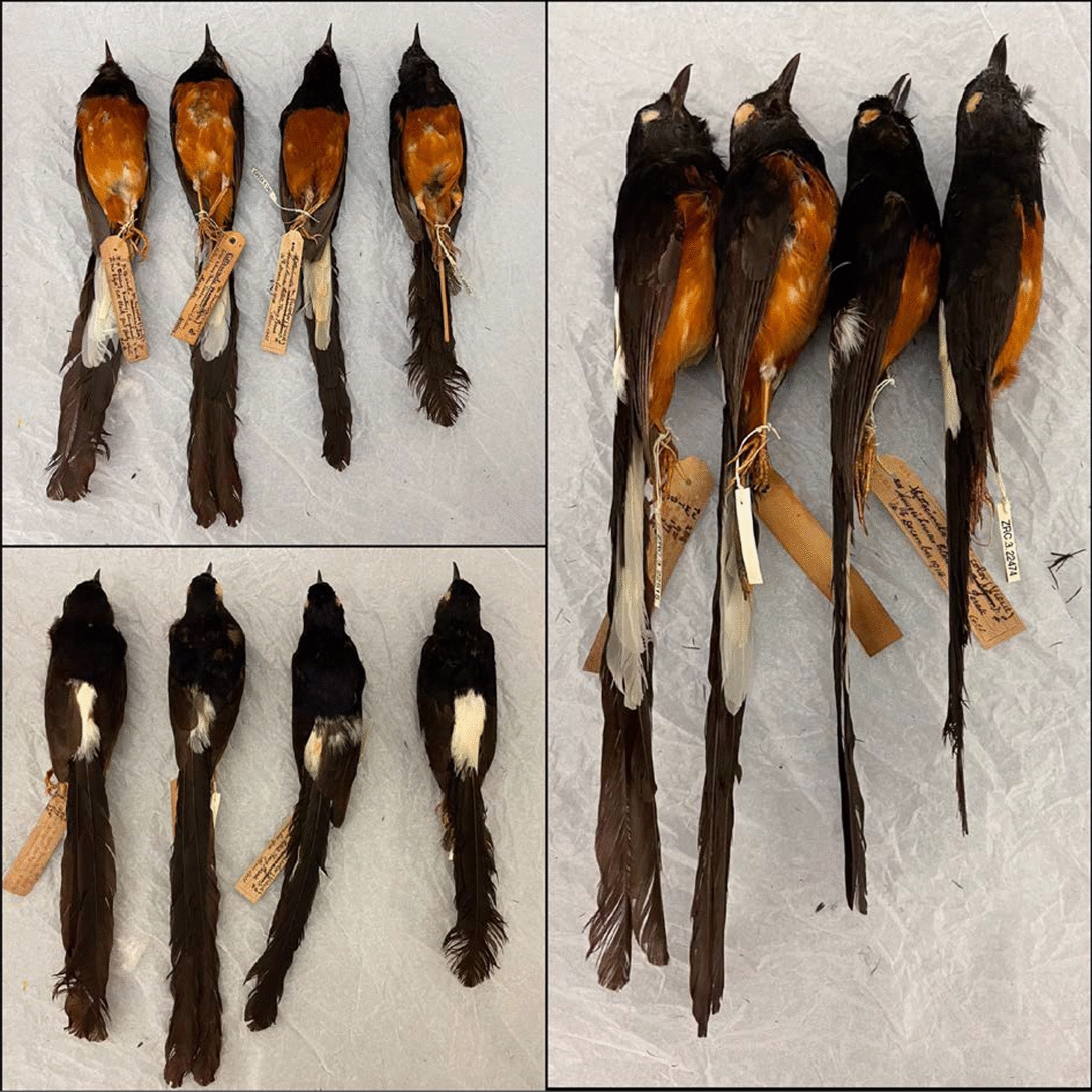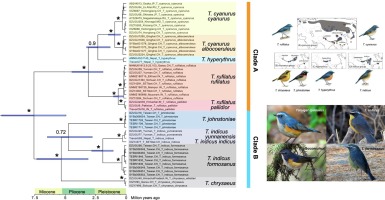Meng Yue Wu & Frank E. Rheindt (2022).
A distinct new subspecies of the white-rumped shama
Copsychus malabaricus at imminent risk of extinction.
Abstract
We here describe a new subspecies of the white-rumped shama
Copsychus malabaricus from the western islands of the Thai Malay Peninsula. The new subspecies is mitogenomically distinct from other members of the complex. Morphologically, its tail is longer and the black breast in males is much less extensive than in males of all other taxa. The discovery of a new shama in a relatively well-explored part of Southeast Asia brings to light a gap in our taxonomic understanding of tropical Asian birds, which continue to be understudied. The new Langkawi shama is the subject of extensive specialized poaching efforts, and its survival may be at risk, calling for immediate conservation action.
We here describe a new subspecies of the white-rumped shama Copsychus malabaricus from the western islands of the Thai Malay Peninsula. The new subspecies is mitogenomically distinct from other members of the complex. Morphologically, its tail is longer and the black breast in males is much less...

link.springer.com









